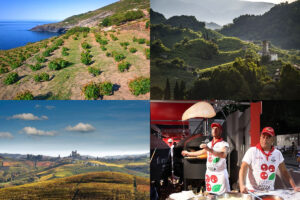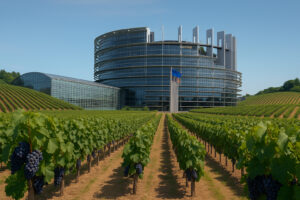It only seems like a small world with ancient roots that plunge "into the volcanoes" and onto their territories but in Italy they are found from Veneto to Sicily, passing through Campania. It’s a wine world that deserves to be studied and talked about more and better, because it produces unique wines. And not only. This is the message from "Vulcania Naples," the think-tank that brings together important production areas such as the Veneto Soave, Lessini Durello and Gambellara, Etna in Sicily, Vesuvius and Campi Flegrei in Campania and Pitigliano in Tuscany. It is based in Campania where once upon a time (thousands, or hundreds of thousands, if not millions of years ago) there were volcanoes that still exist today and are still active, and where, even in wine, the "V" factor is the master.
What makes them special? The difference in volcanic soils is, of course, the greater wealth of microelements that guarantees an important plus in quality and originality of the wines produced in these particular terroirs. In other words, it is the "antidote" to competition based on more mundane merchandise mechanisms whereby a product that is not original and inimitable can be reproduced anywhere. It’s like Columbus’ egg: the unique climate and soil conditions cannot be replicated any other place therefore the products cannot be imitated. It’s a crucial added value that only wine (and only particular “volcanic" products) possesses.
But there’s more. "Vulcania", in its 5th edition, is also an "initiative that is unique in the world”, says Professor Attilio Scienza, one of the leading experts on viticulture and a staunch supporter of the project since its first edition, “because it brings together various territories, distant and different, but connected by the volcano, active millions of years ago or still active today. The soil, climate and above all cultural implications”, continues Scienza, “become one at the same time and are able to promote small denominations, which alone could not emerge”.
A real "underground", therefore, that combines culturally diverse terroirs for agricultural practices and processing (which are usually tied to tradition) that are then recomposed in the glass. Because if wine evokes emotions, it should reveal itself through a feeling, a memory or an image. And the volcano, in this sense, serves as a reference point to reveal the wine immediately.
The move to Campania, supported by the Chamber of Commerce of Naples, was also an opportunity to "talk out loud", as they say, regarding problems that ultimately affect the entire structure of the Italian wine sector. "The quality of a product like wine must begin first of all”, says Professor Fabio Terribile, Professor of Soil Science, Faculty of Agriculture in Portici, at the University of Naples, and author of the research projects of the Consortium of Soave and Etna soil cartography, “with the potential of the land / soil, and the wine world is the center of the increasingly important fight to protect the soil, as indicated by the Soil Thematic Strategy of the EU. A fight that also produces income”.
But unfortunately, the conditions for research in Italy, as we are too often reminded, do not allow working serenely to achieve these objectives and Professor Terribile is also launching an important warning: "The pyroclastic soils in the Campania region are a mosaic of soil and climate yet to be discovered completely. Unfortunately, however, there has been no serious study conducted, like instead elsewhere, to systematize this knowledge and offer the wine industry and important tool”.
To talk about wine when one is just a few steps away from the cavern of the Cumaean Sibyl and the island of Circe has stimulated fascinating suggestions. "Volcanoes are places where the wine myth persists today”, said Scienza, “they are true “monumentum”, the ancestral “totems” of everyone’s memory. Therefore, the consumer is prompted to immediately associate with wine”, said the professor at the University of Milan, “that image, which is connected to an immediate sensation”.
Vesuvius and the Phlegraean Fields is a universe partly forgotten and that only in the recent past has regained some notoriety. "At the beginning of the 20th century”, said Antonella Monaco of the Museum Centre of Agricultural Sciences in Portici, “the local vineyards in the Flegrea were practically the only existing culture. Since 1950, this heritage had been almost completely lost in favor of fruit cultivations. Currently we are returning a little to the vineyards, but the damage has been done. Not only”, continues Monaco, “ but the ampelographic wealth of the area, which is slowly being rebuilt through recovery of old vines, was extraordinary, as the collection of the Campania Region demonstrates. It is a source of incredible biodiversity that put together with the equally vast wealth of forms of vine farming witness a unique wine culture in Italy”.
Copyright © 2000/2025
Contatti: info@winenews.it
Seguici anche su Twitter: @WineNewsIt
Seguici anche su Facebook: @winenewsit
Questo articolo è tratto dall'archivio di WineNews - Tutti i diritti riservati - Copyright © 2000/2025








































































































































































































